Chile: Interview with synthesis anarchists Boina Anarquista
Interview between synthesis anarchists Boina Anarquista in Chile and JURNAL ANARKI in Indonesia.
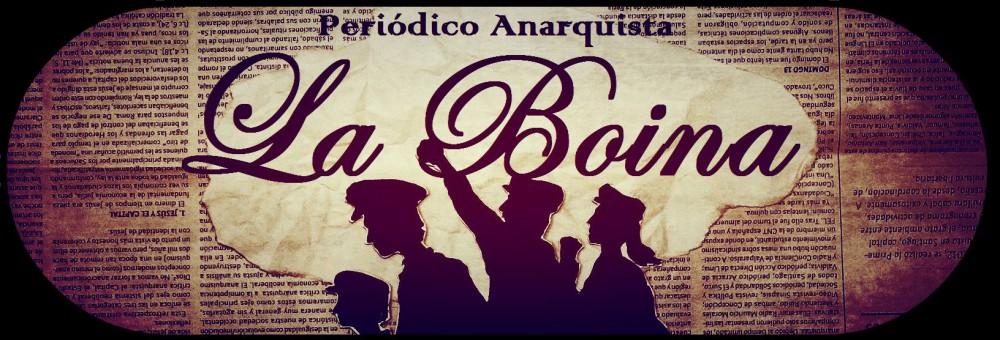
1. What motivates you to create this counter-information newspaper?
A: Hello, good day. Well, the platform began as a newspaper, edited precariously with Word. What motivated us was that nearly 11 years ago, in 2013, when the waves of the student movement in Chile were still present, we started researching and came across a book about anarchist propaganda in Chile. We were amazed by how much of it existed in the 1920s.
Around that time, there were other physical-format newspapers: El Surco (2009-2013), El Amanecer (from Chillán, in central-southern Chile) (2011-2013), El Sol Ácrata (from Calama, northern Chile; 2011-2024), Acracia (from Valdivia, far south of Chile; 2012-2019) and Solidaridad, a Libertarian-Communist newspaper, aligned with the branch closest to especifismo or platformism (2010-2016).
It was within this context that we decided to found a newspaper called Periódico La Boina (2014), which only released 7 issues. Financial problems, time constraints, and lack of coordination led to its discontinuation, but we noticed that the website’s visits kept growing, reaching over 100,000 per year.
The need to communicate, reflect, critique, share, and discuss with other comrades enriches our ideas and fosters camaraderie, especially through printed propaganda. What I see as a downside—and something we are also guilty of—is that there’s a lot of digital propaganda circulating on social media. While it’s positive to have more contact with comrades from other places, the information becomes more instantaneous, preventing deeper reflection. It also introduces anxiety over likes, making everything faster.
We believe it’s necessary to return to printed propaganda without neglecting the digital. It’s essential to discuss and reflect as the anarchists of the past used to do.
2. In our informal conversation, you mentioned your involvement in a historical archive project. Could you tell us more about it?
A: Yes, I am currently part of a group called Archivo Histórico La Revuelta, which has existed since 2009. The mission of the archive is to preserve the memory of anarchist history. Archivo La Revuelta publishes a magazine called Acontratiempo, where we present research by comrades on the history of anarchism in Chile and elsewhere.
The issue is that, according to some historians, anarchism arrived in Chile in the 1890s and lasted until 1930, when the last mass anarchist unions existed (of course, there were experiences in the 1950s and 1960s, and we have found active comrades in the 1970s, but they are marginal compared to Marxist groups). After that period, anarchism experienced a revival, gradually growing with counterculture and punk in the 1990s. So the archive has the mission of preserving anarchist memory in this region, both from the 20th century and from the late 1990s and early 2000s. There are many struggles led by younger comrades, as young as 16 years old, who may not be as familiar with the struggles fought in the early 2000s, for example.
That’s why the archive doesn’t just focus on the history of anarchism from 100 years ago but also on the present. We aim to collect and reconstruct the history of anarchism from the 1990s, when there were many zines and the first newspapers, to understand what interested comrades of those years and to share those struggles and discussions with younger comrades so they can learn about the efforts and ideas of those who came before them.
On the other hand, anarchist research has emerged in recent years. Its main historians might include Eduardo Godoy, Manuel Lagos, or study groups like the Grupo de Estudio José Domingo Gómez Rojas, which has the Editorial Eleuterio.
Currently, the archive operates in a physical space called Casa Anarquista La Termita, which is shared with other anarchist projects. Also, with comrades dedicated to research, we are also organizing the IV Congress on Research about Anarchism(s) – Santiago – October 2025. The first Congress was held in Buenos Aires, Argentina (2016); its second edition was in Montevideo, Uruguay (2019), and São Paulo, Brazil (2022).
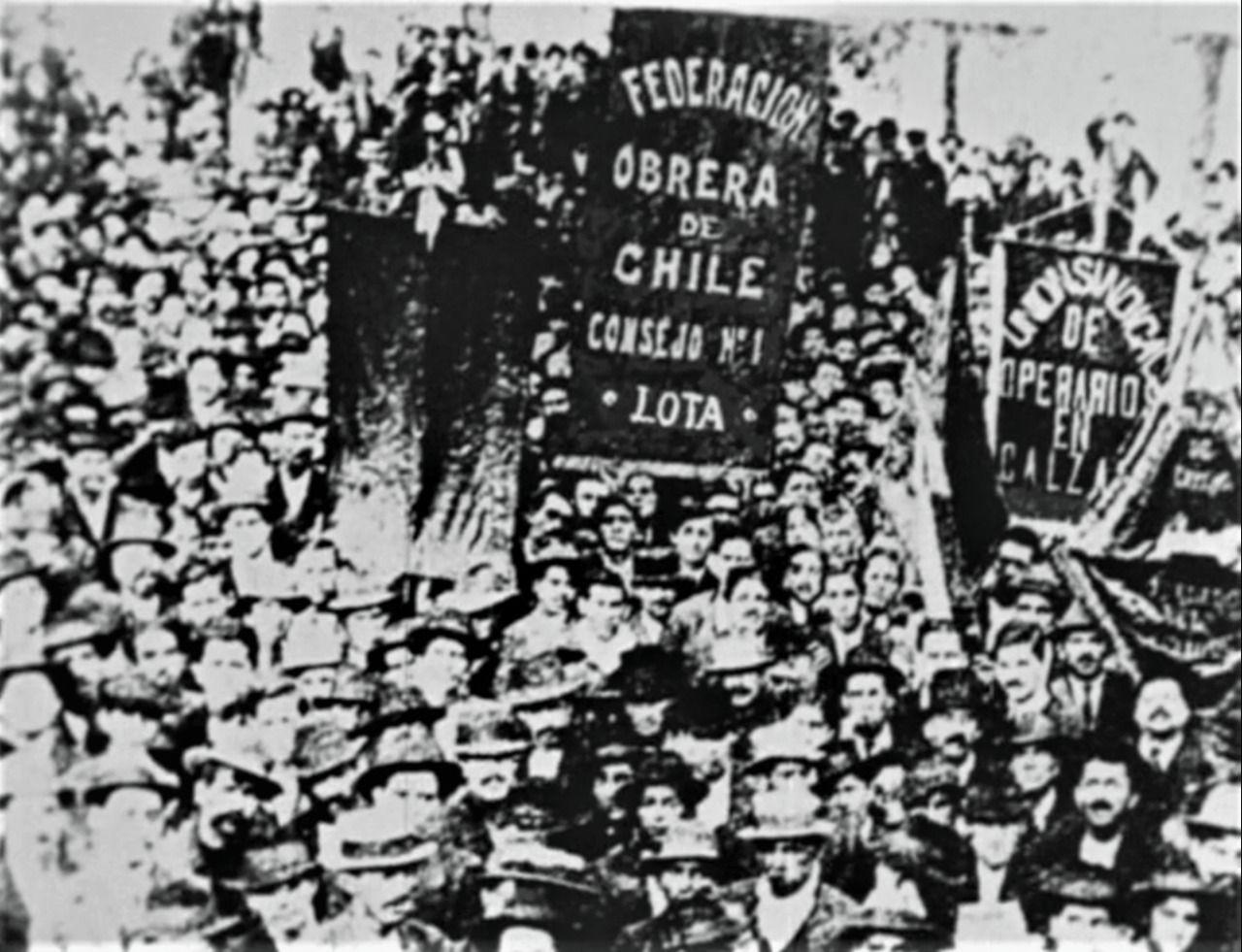
3. People from non-Latin countries are often surprised by the growing anarchist tensions in Chile, especially the diversity of the anarchist movement, its rejuvenation among youth, and the intense repression anarchists face while maintaining combative and insurrectionary actions. What makes all this possible?
That’s a complex and good question. Let’s take it step by step
1. Historical Context: Anarchism in Chile lost its influence around 1930, following a populist, proto-fascist dictatorship led by Carlos Ibáñez del Campo (1927–1931). It continued to exist but with diminished societal impact.
Decades later, during Pinochet’s dictatorship (1973–1990), a plebiscite was held to decide whether he would continue in power. The “NO” won in 1988, leading to the return of democracy in Chile. However, the former dictator remained Commander-in-Chief of the Army, and many aspects of the dictatorship were incorporated into the new democracy, such as the 1980 Constitution, the neoliberal economic model, and Pinochet’s privileged status within the state. Even, the arrest of Pinochet in London (1998) and his subsequent rescue by the center-left Concertación coalition further cemented dissatisfaction with the new democratic transition. This dissatisfaction, combined with the commemorations of the 500th anniversary of the Spanish invasion of the Americas, fuelled a critical leftist resurgence. In that context, the first demonstration where anarchists became visible took place during the Quincentenary in October 1990.
2. Punk Counterculture and Diversification of Social Struggles: Discontent was reorganized, punk flourished, and various identity-based struggles,—anti-militarism, feminism, vegetarianism, LGBTQ+ rights, Mapuche rights, and human rights—gained prominence. Alongside the growth of the extra-parliamentary left, anarchism saw a cultural renaissance.
While older anarcho-syndicalists active in the 1950s had limited influence on the young punks and dissenters, these youth revived the movement almost from scratch.
Besides that, since the 2000, an okupa movement (squatter) turning abandoned houses into cultural centers. These okupa houses were fundamental to revitalize the anarchist movement.
3. Social Discontent in Chile: In a neoliberal context where the state provides no social safety net, the people v/s Capital/State conflict intensifies, fuelling discontent, because the state doesn’t answer to people’s needs. In our view, this makes it easier for critics of the state in neoliberal countries, in comparison to social democratic states. Everything in Chile—education, healthcare, pensions, even water—is commodified, making the enemy both the State and Capital, which are seen as indistinguishable.
This dynamic has sparked uprisings, including the Mapuche resistance (with the creation of the Coordinadora Arauco Malleco in 1997), major protests against APEC in 2004, and the resurgence of the student movement in 2001, 2006, and 2011. In this way, anarchism grows in the Chilean discontent, with the appearance of many collective and some ideas of making a federation, that finally breached.
4. Insurrectionary/Informal and Individualist Anarchism: Direct actions, such as bombings of banks and financial institutions, have shaped the public perception of anarchism. For instance, the tragic death of Mauricio Morales in 2009 brought widespread media attention to anarchism, sparking curiosity among many.
Events like the Caso Bombas (2010–2012) revealed irregular evidence and questionable investigations, highlighting state repression and inadvertently strengthening anarchist propaganda.
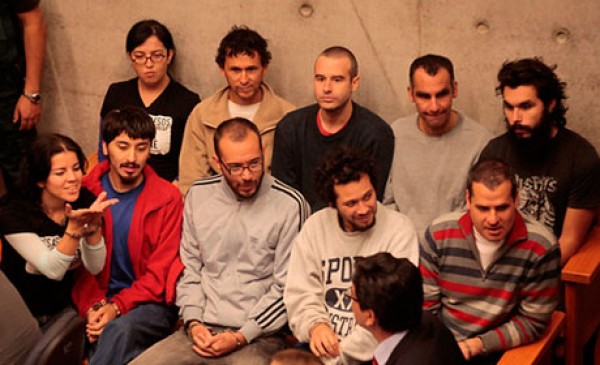
5. Subversive Culture: In Chile, subversive culture, inspired by revolutionary leftist organizations from the dictatorship era (e.g., MIR, MAPU-Lautaro, FPMR), feeds anarchism with imagery of bank heists, explosive devices, and molotov cocktails. While these actions aren’t ideologically anarchist, they inspire a subversive ethos.
What makes it possible is the existence of a subversive culture of Molotovs and a decentralization of struggles. However, excessive decentralization and individualism have led to a lack of coordination, which is fundamental to anarchism and something Chilean anarchism lacks.
Anarchism in Chile is very diverse, but also scattered and perhaps somewhat uncoordinated.”
3.- In Chile, there are events like the “Day of the Young Combatant” to keep alive the memory of those who fell in the struggle. How much does this commemoration of fallen combatants influence society?
The “Day of the Young Combatant” commemorates the deaths of two brothers from a Guevarist leftist organization during the dictatorship: Eduardo (20 years old) and Rafael (18) Vergara Toledo, militants of the Revolutionary Left Movement (MIR).
Although it is the anniversary or commemoration of an entire revolutionary left, anarchism has been reclaiming this commemoration, originally rooted in the revolutionary left. For society in general, it’s just another day to get home early, as there might be clashes with the police in neighborhoods or communities, making it potentially dangerous. In fact, a segment of society has renamed the “Day of the Young Combatant” as the “Day of the Young Delinquent.”
For the left, it is a day of remembrance, and for the more revolutionary left and anarchists, it is a day of combative memory.
At a societal level, it doesn’t contribute much, but through the fallen, we are recognized, as the fallen are acknowledged by the press. For example, many people don’t know what anarchism is but associate anarchists with “bomb-planting” because an anarchist named Mauricio Morales planted a bomb in 2009. While this is a crude caricature and a reductionist perspective, anarchism exists in society and the press—whereas in other countries, like Peru, for example, it wouldn’t make the news. The fallen make us recognizable in society, but not in substance.
Half of the graffiti says things like “Tortuga presente” or “Punky Mauri.” Political culture revolves around the fallen: “Political prisoners to the streets, Punky Mauri presente,” but it doesn’t engage much with our everyday oppressions or systemic critique. One weakness of anarchism in Chile is creating a proactive political culture and a critique of the system that resonates with Chile’s most oppressed, beyond political prisoners and martyrs (who are extremely important but lack broader connection with most people suffering under capitalism).
Although there is proactive propaganda, it is much scarcer than the other kind. Personally, I believe the two must go hand in hand: proposals, denunciations of political prisoners, and remembrance of comrades—the past (the fallen), the present (political prisoners), and the future (what we propose or aim for, what we want).
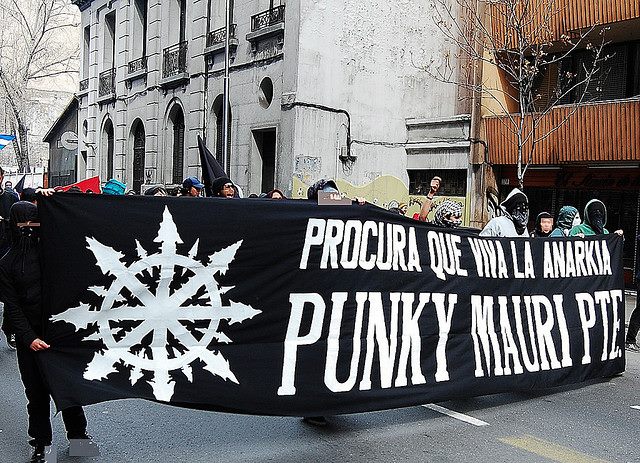
5. By “normalizing” combative action, Chileans seem ready for any general uprising. How did the movement achieve this diversity of tactics? Are there debates or even internal divisions on the matter?
There is a normalization of political/revolutionary violence because it never stopped. Since the dictatorship, perhaps the actors have changed. In the last 20 years, anarchists have taken the lead, whereas previously, it was the revolutionary left (Leninist or Guevarist).
However, this doesn’t mean we are prepared for a social uprising or revolt. There is a normalization where, in moments of conflict or rebellion, people know what to do, such as clashing with the police, burning private property, or destroying infrastructure. But a revolt involves more than just normalizing violence; it’s demanded by the struggle and the repression it faces. For this, there is no preparation. There is also a lack of coordination with others or mutual aid. We are never fully prepared, and the revolt exposed our weaknesses.
Mutual aid exists but is scarce, as are cooperative projects (which do exist and are valuable experiences). For many anarchists, the conflict is more alluring, which is fine, but as I said before, conflict must go hand in hand with proactive proposals to create the new world we believe in.
For example, during the social revolt, many anarchists improvised their actions because:
-
Anarchist nihilism and individualism prevailed, at least in Santiago.
-
There was a sense that “revolution is not possible,” only conflict with authority. Freedom wasn’t seen as achievable through revolution but through conflict, as it seemed almost impossible for society to rebel against its masters.
However, they were wrong—society did rebel. The question is: where were the anarchists? Disorganized and uncoordinated, though adept at resisting repression in street violence. But there was a lack of construction: where are we going? What’s our roadmap? As Malatesta used to say, “we need a program.”
Unfortunately, anything that sounds like “program” or “organization” is perceived as platformist or bureaucratic, which stagnates us. We need both affinity groups, spontaneous revolutionary violence, and organization, planning, and strategy. There’s a lack of synthesis from our perspective. Therefore, no, we are not ready for a revolt.
6. Can you tell us how much support the struggle for the Mapuche people’s autonomy has in Chilean society? And what contribution do anarchists make to this struggle?
The Mapuche struggle has a significant impact on society because the Mapuche have organized since the 1980s, confronting the racism in Chilean society. For example, my mother lived in Temuco, and in the 1990s, supermarkets would serve her before Mapuche women—a clear example of racism.
In 1997, truck burnings marked the beginning of the Coordinadora Arauco-Malleco (CAM), which, in one of its statements, rejected both Marxism and anarchism as European ideologies. Many leftists support their struggle for the restitution of lands usurped during the 19th-century “Pacification of the Araucanía” and the 20th-century expansion of latifundistas (see historian Martín Correa). Leftists, whether progressive, revolutionary, or anarchist, often support this struggle—especially after the killings of Alex Lemún and Matías Catrileo (the latter an anarcho-punk in his youth).
There are different types of support. In the south, several armed Mapuche organizations exist: CAM, Resistencia Mapuche Malleco, Weichán Auka Mapu, and the Mapuche National Liberation Movement. Many resort to political violence, such as burning forestry trucks or reclaiming land, as they view transnational timber companies and latifundistas as their primary enemies—not Chileans, whom they also see as oppressed by the State/Capital.
Many Chileans support this, but among progressives, some believe the truck burnings or attacks are police setups, right-wing political schemes, or acts by businessmen themselves. This denies the violence of the oppressed against oppressors.
The more revolutionary left and anarchist groups do not believe in the setup theory (though setups exist, not everything is one). They affirm the oppressed’s legitimate right to use political violence against oppressors. Solidarity is shown through protests or ceremonies for the fallen, especially on October 12, which commemorates the arrival of invaders to the Americas.
It’s important to note, however, that some comrades claim that while we show great solidarity with the Mapuche struggle, the Mapuche struggle doesn’t reciprocate much support for Chileans’ social struggles. This highlights contradictions within social movements.
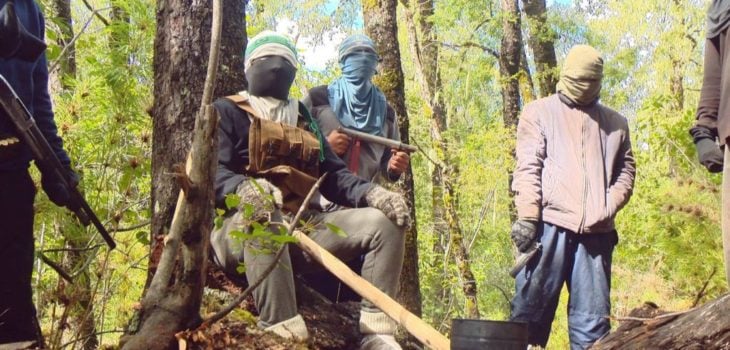
Additional Question: Please share your thoughts or anything you would like to say that was not asked in this brief interview. There are no limits.
Answer: Sometimes, we comrades believe that anarchism in Chile is romanticized, often referred to as the “Greece of Latin America.” While there is indeed a significant subversive culture, and anarchists occasionally make headlines, we believe there is a lack of coordination. There are many organizations, but they do not focus on envisioning a future or drafting a program, nor is there much thought given to building large-scale organizations. I think we need to reflect on this.
I would also like to add that some comrades and I feel there is currently stagnation. The movement that grew from 2006 to 2019 no longer seems to be present. It is said that after the uprising and the democratic referendums meant to channel public discontent, many people became disillusioned and no longer want to fight. Adding to this, we are now governed by progressivism, which promised to change Chile’s economic system—a promise that remains unfulfilled. There is a sense of demotivation among the Chilean people.
On another note, there is a growing xenophobia toward the Venezuelan population. This stems partly from cultural differences but also from the rise in organized crime and drug trafficking. Chile remains one of the safest countries in the region, but its population is among the most fearful of crime. This has led to the State arming itself not only against crime and drug traffickers but also against social organizations that question political and economic power structures.
